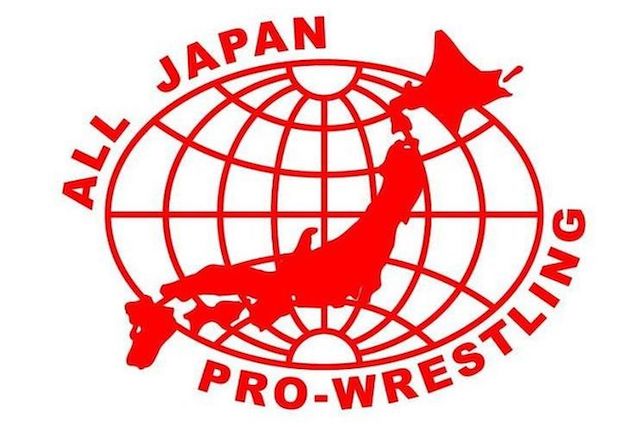S
The Four Pillars of Heaven were vital to All Japan Pro Wrestling in the 1990s. However, it was Mitsuharu Misawa who was front and center, with Toshiaki Kawada right behind him, followed by Kenta Kobashi and Akira Taue. Misawa’s rise to the top is one of the most incredible yet tragic wrestling stories of all time, but to understand it, we have to go back a few decades.
The year 1972 saw Rikidozan’s two greatest students – Antonio Inoki and Shohei “Giant” Baba, branch off into their own. Their approaches and mentality towards wrestling were entirely different. While Inoki wanted a more martial arts-based style, Baba was keen on a more American-influenced style, seeing his own success in NWA. It meant that they formed their own promotions, with Inoki forming New Japan Pro Wrestling while Giant Baba formed All Japan Pro Wrestling.
Due to a lack of starpower and the fact that he was a big draw in itself, Baba started off by building the company around himself where he was the main star. However, the time came in the late 1980s where Baba was aging and he knew that he had to pass the torch down to someone younger and fresher. He turned to Genichiro Tenryu, who would become Jumbo Tsuruta’s first title challenger.
Backing up again, Jumbo Tsuruta was a larger-than-life figure and one of the only Japanese superstars who experienced success in the United States as a respected babyface. He would become the first-ever Triple Crown Champion in AJPW history and Tenryu went chasing right after him.
A series of matches saw Tenryu win the title on June of 1989, beating Tsuruta in a bout that was deemed as “Match of the year”. They set the early precedent for how the quality of Triple Crown title matches would be – one that was surpassed by the Four Pillars of Heaven. Later that year, Tenryu even pinned Giant Baba clean in a tag team match – a feat that was only ever achieved by him and Mitsuharu Misawa later on.
Unfortunately for Baba, Tenryu would end up defecting to his own promotion Super World of Sports and it was a big blow to Baba, who lost his top star. He had to replace him with someone else, which made him turn to the young junior Tiger Mask II. Now once more, we have to go back to understand the context.
The Tiger Mask character was a popular manga and anime series based on pro wrestling and its popularity made NJPW purchase the rights to the character, with Satoru Sayama being the first of the lineage. It was introduced to help the junior heavyweight division, but Sayama’s hatred for wrestling made him quit and write a book trashing the business. AJPW saw the opportunity and bought the rights to the character, introducing Tiger Mask II.
Tiger Mask II proved to be a major prospect for AJPW and his popularity had risen so much that Baba recognized him as the true successor to the throne. He knew that to gain more popularity, the young Tiger Mask II would need to show his face. After six years of being Tiger Mask, he teamed up with real-life high school friend (and future rival) Toshiaki Kawada. In a shock move, he made Kawada unmask him, revealing his face for the first time.
He would shoot to superstardom in no time and just a few weeks later, he faced Jumbo Tsuruta in an iconic main event at Nippon Budokan. He beat Tsuruta and instantly established himself as a main event player. Though he was unsuccessful in his first Triple Crown title attempt, his destiny was clear. Misawa’s popularity would rise in no time, primarily due to his charisma, skill and technical proficiency. At his peak, there was no wrestler on the planet better than Misawa and he would continue his ascent over the next two years.
Finding success in tag teams, he began to defeat some major names in the company and it was 1992 when his moment of triumph came. He defeated Stan Hansen to win his first-ever Triple Crown Heavyweight Championship. His reign would last a whopping 705 days. It was the first of five World championship reigns for him and marked Misawa’s rise to the mountain top.
Over the course of the 1990s, Misawa would usher in the most glorious period in Japanese wrestling history, facing some of the greatest ever and being a part of the Four Pillars of Heaven. His matches with Toshiaki Kawada were unparalleled and he would constantly cross paths with the likes of Kenta Kobashi and Akira Taue, both of whom became major stars in their own right.
Misawa’s importance to wrestling simply can’t be understated and he’s an icon of the industry – not just in Japan, but worldwide.
After Giant Baba’s death, Misawa would defect and form his own promotion known as Pro Wrestling NOAH. In a shocking move, 24 of AJPW’s contracted performer’s defected with Misawa. While Toshiaki Kawada was the only one who chose to stay, Misawa would dominate in NOAH, but primarily made Kenta Kobashi the big focus of the promotion.
Due to Kenta Kobashi’s cancer, Misawa had to take the burden as he was the only major draw in his company. He wrestled far past his prime and his body had suffered from over two decades of damage. During a tag team match in 2009, Misawa took a backdrop and fell unconscious. He tragically passed away soon after, leaving behind one of the greatest legacies in wrestling history.





